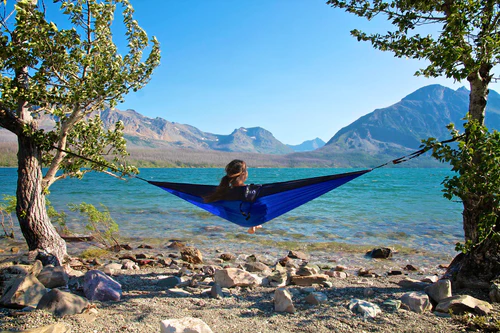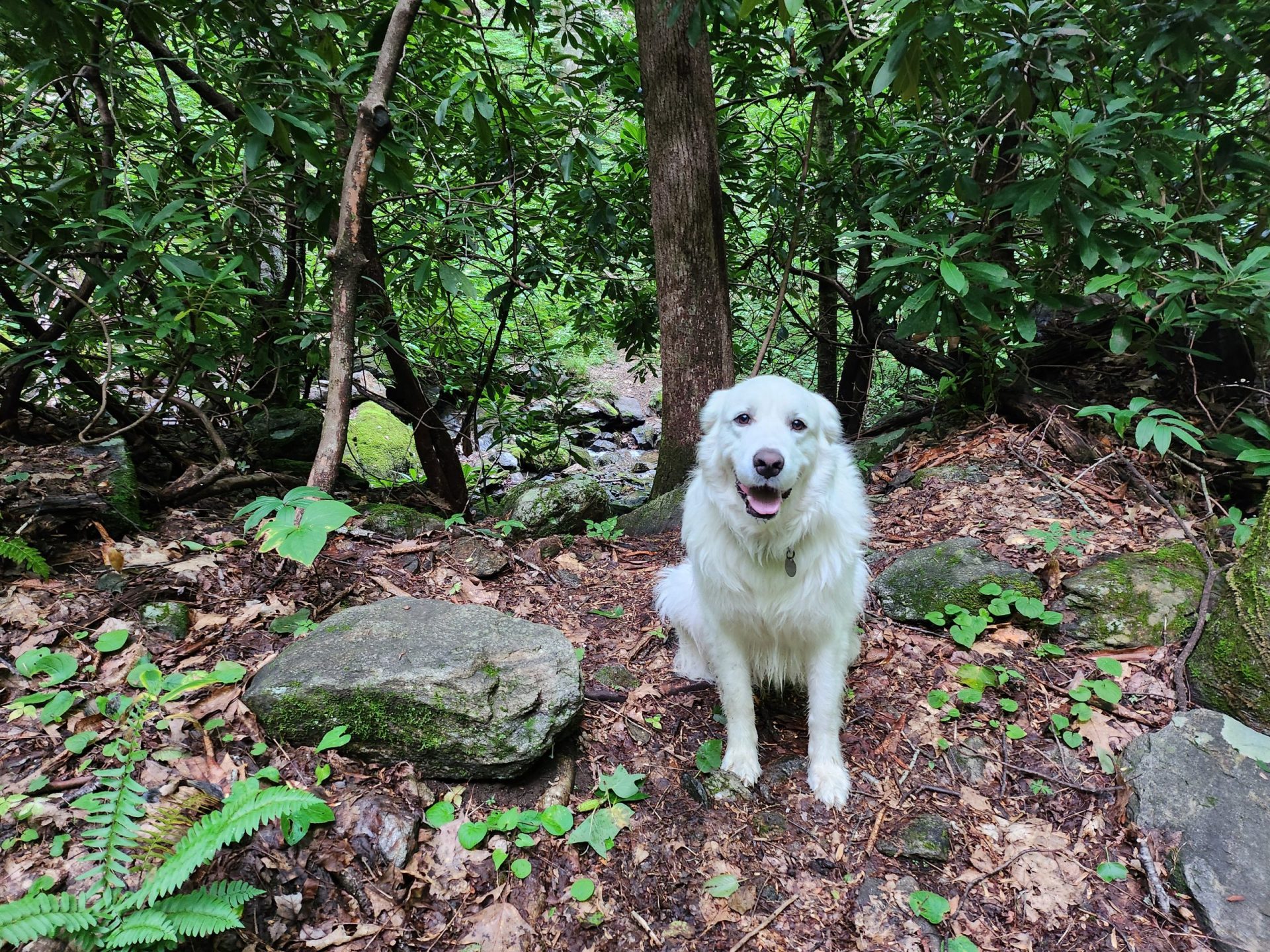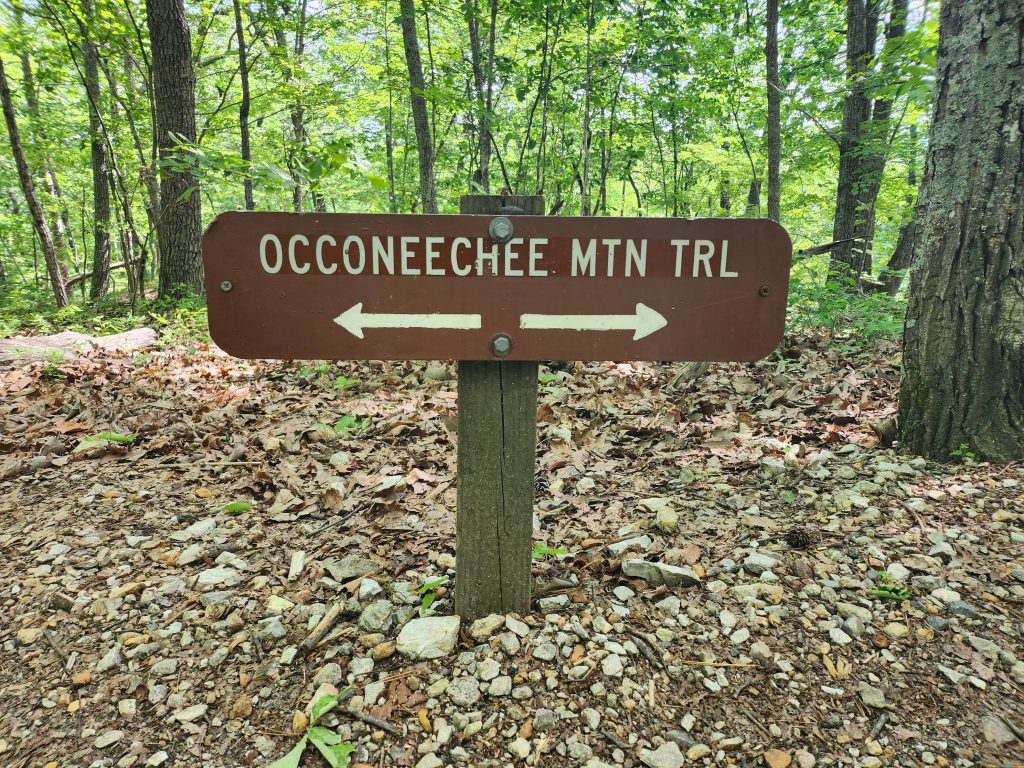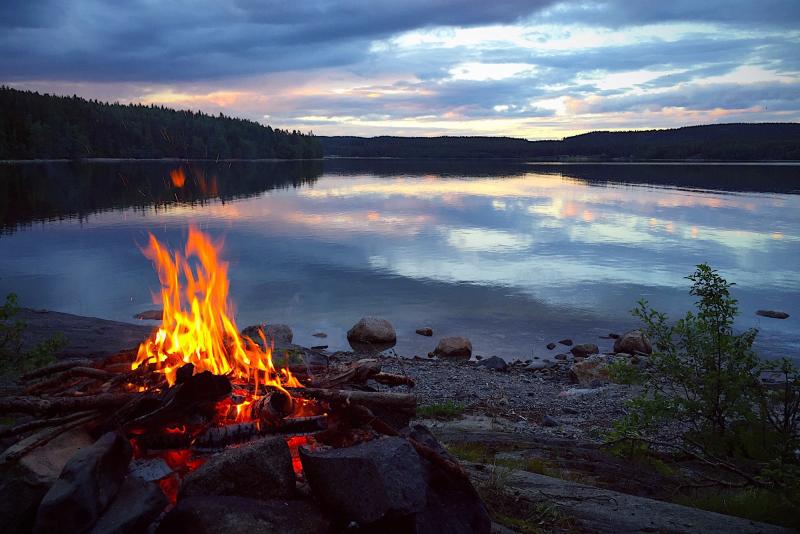By midday, the air in the cove had settled into a dry hush. My boots lay beside the creek, and the trees were spaced just wide enough to hang the hammock. I clipped the carabiners to the Atlas straps and leaned back. The fabric stretched, then held firm. Whether you sleep under the stars or sway between two oaks in the backyard, ENO has become a familiar brand to people who spend time outside. Their hammocks are simple tools with outsized appeal: small enough to carry, quick to deploy, and always ready for rest.

Over several weeks, I rotated through the three most popular ENO models: the DoubleNest, SingleNest, and TravelNest. I tested them in western North Carolina, where the forests are filled with long switchbacks, black bears, and clear creeks. The terrain changes fast, and so do the reasons for stopping. Some days, I picked a spot just to rest. Other times, I wandered until I found wild blueberry trails worth the detour, the kind with fruit low enough to grab without standing.
The DoubleNest
The DoubleNest was the first one I strung up. It’s roomy—9 feet 6 inches long and over 6 feet wide. It holds up to 400 pounds, though I never shared it with another person overnight. What it offers is stretch and space. You can sprawl sideways or diagonally, with more material wrapping around your shoulders than the others. The weight penalty is mild: 19 ounces. It fits into a built-in stuff sack about the size of a grapefruit.
Setup is fast. I used Atlas straps, which are sold separately. The carabiners are strong, and the stitching along the nylon is tight and triple-reinforced. One night, it rained, and the hammock dried by mid-morning. Another night, I pitched it beneath a tarp to watch the fog settle. Compared to a tent, it takes up no ground space and leaves little trace.
The only drawback is its size. For backpackers counting ounces, the DoubleNest feels like a luxury item. It’s best used near your car or on short hikes with big payoff campsites. But if comfort matters, and it often does, this is the hammock to bring. I found it especially good for watching dusk settle in—perfect when the fireflies come out by the hundreds and you want a front-row seat without getting bitten.
The SingleNest
The SingleNest strips it down. Same length as the DoubleNest, but only 4 feet 10 inches wide. It weighs 16 ounces and packs even smaller. You still get the same high-denier nylon, strong carabiners, and quality construction. But you lose the stretch and space.
I took this one on a solo backpacking trip through Pisgah, where the trails narrow and the campsites are quiet. It fit easily in my bag and worked well under a minimalist tarp setup. Once tied between two maples, it held steady through a night of shifting winds. I noticed less cocooning, which some prefer. It feels more open. But for side-sleepers or people who like to wiggle, the reduced width might pinch.
It doesn’t include straps, so I packed the Atlas system again. That adds to the cost and weight, but the trade-off is simplicity. I woke up rested. No sore shoulders. No damp back. For a light, compact, one-person sling, the SingleNest does exactly what it promises.
The TravelNest
The TravelNest is marketed as a combo. It comes with tree straps included, packs into a soft bundle, and weighs about 28 ounces. It’s the heaviest of the three but has the cleanest setup. Everything fits together. No guessing. No knots.
This model surprised me. The hammock itself is shorter ( 9 feet by 5 feet ) but the straps are simple and forgiving. Each one has ten loops for length adjustment. I hung it beside a campsite on the edge of Panthertown Valley. I cooked noodles and lay in the sling with my dog curled under my knees.
The packed weight makes this less ideal for long hikes, but for backyard use or music festivals, it’s a great fit. Everything you need comes in the bag, and setup takes less than two minutes once you’ve done it a couple of times. It’s the kind of gear that works well when you’re posted up at camp for the weekend or hanging near a stage with friends. Also worth mentioning: at big events like Bonnaroo or Mountain Dance, where cell service often fails, a Meshtastic device makes it easier to keep track of your group without relying on bars.
Where They Work Best
All three models use the same fabric and similar hardware. What sets them apart is use case.
- The DoubleNest is the most comfortable and best for lounging. It’s great for reading, long naps, or evenings spent watching fireflies along the trail.
- The SingleNest is lighter and more compact. It shines on backpacking trips where space and weight matter.
- The TravelNest is easiest for beginners. It’s ideal for car camping, festivals, or lazy afternoons in the yard—especially when you want an all-in-one kit.
If you plan to sleep in any of them, bring an underquilt or insulated pad. Hammocks are notorious for cold backs. That’s not a design flaw, just basic physics. With the right add-ons, though, these can replace a tent for most fair-weather trips.
Final Thoughts
In a culture crowded with gear and hype, hammocks offer a plain kind of relief. You don’t need much: two points, a few straps, and some time. The ENO lineup gets the basics right. These aren’t complicated systems. They’re tools that make waiting more pleasant and rest more likely.
I finished my testing on a warm morning in July. Blueberries hung low along the trail. I packed up the hammock, brushed pine needles off the straps, and watched the light shift across the ridgeline. Hiking and camping bring many rewards—from a good night’s sleep to the mental clarity that time outdoors often sparks.
Rest matters. A hammock gives you that: a place to stop, swing, and breathe. Sometimes that’s all you need.








Leave a Reply